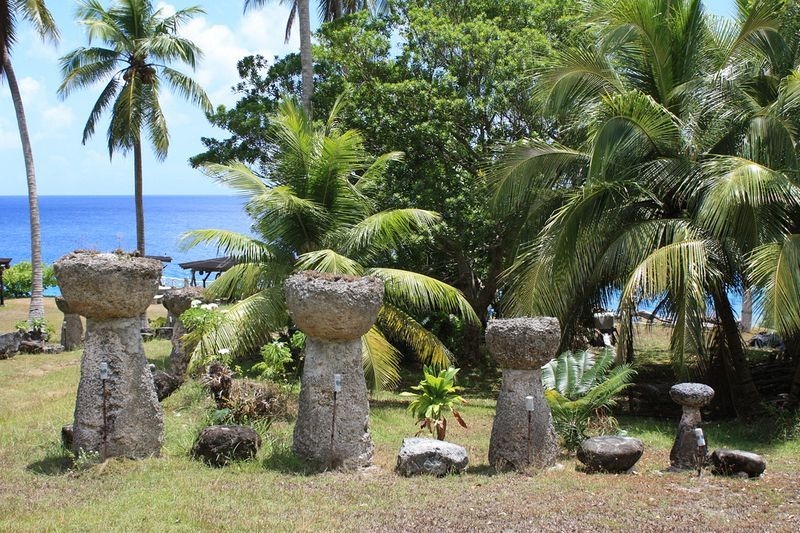Throughout most of the Mariana Islands, a crescent-shaped archipelago in the western North Pacific Ocean near Japan, a peculiar kind of megalithic structure known as Latte Stones are found. Ranging between 4 to 7 feet in height, these erect stones are composed of a base column, called halagi, with a semi-circular bowl-like structure called tasa, at the top. Latte Stones were used as foundations over which the ancient Chamorro people built their homes. The houses were constructed out of wood and had a characteristic A-shaped thatched roof. These houses are generally thought to be for the high ranking or high caste families in the village, although some of the largest latte stones are found in Guam island’s interior where many of the low caste lived.
Photo credit: Sandwich/Flickr
The elevated floors, which were supported by the latte stones, apparently provided residents shelter from floods, while also keeping the buildings dry and cool by enabling air to circulate under the house. It is also provided a shaded workspace beneath. What’s unclear, however, is the strange shape of the latte stones. Archaeologists suggest the two-part latte stones —pillar and cap— may have acted as a shock absorber and protected the building during an earthquake. The cap extending up and outward from the pillar may have acted as a barrier for crabs and vermin trying to climb into the house for food or shelter.
Building of latte stones might also have been influenced by social customs. This assumption can be drawn from the discovery of human burials either within or near sets of lattes located near shorelines. Such burials are but absent in latte stones found inland.
The latte stones were believed to have been built between 800 AD to 1700 AD. By that time, Spanish colonization of the Mariana Islands had begun and many latte sites were destroyed by the invaders. Foreign diseases and warfare decimated Guam and the rest of the Marianas population. The Spanish authorities then forced upon the local population a reformation process by which they tried to taught the Chamorros the European way of life. The practice of buildings houses atop latte stones was abandoned as many Chamorro members embraced the changes. Today, the latte stones are found in the abandoned villages, as a reminder of the Chamorro people’s ancient way of life. In modern times, they have become a symbol of Chamorro’s identity.
Photo credit: theguamguide.com
Photo credit: R Mendez/Flickr

Photo credit: Michael Lusk/Flickr
One of the largest latte stone ever attempted lay unfinished at the Rota Latte Stone Quarry. Photo credit: Peter/Flickr
Sources: Wikipedia / GuamPedia.com
















Interesting article. Given the size of the latte stones illustrated, I think that the illustration of a lodge were a bit unambitious with regard to its size.
ReplyDeleteALL but one of the structures that exist are NOT as large as the ones depicted still in the ground. The drawing is true to the common structures found across the island chain.
ReplyDelete